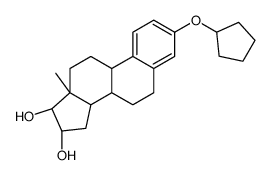50-27-1
| Name | estriol |
|---|---|
| Synonyms |
16α-Estriol
OVESTIN TRIOVEX (16a,17b)-Estra-1,3,5(10)-triene-3,16,17-triol 16a-Hydroxyestradiol Tridestrin Oestriol Thulol Ovo-Vinces Colpogyn Orestin MFCD00003691 oekolp Estra-1,3,5(10)-triene-3,16,17-triol, (16α,17β)- Theelol E 3 Estriol 16α,17β-Estriol OE3 (16α,17β)-Oestra-1,3,5(10)-triene-3,16,17-triol 16α-Hydroxyestradiol Aacifemine Holin Ortho-Gynest 16a-Estriol Estriol (JP15/USP) Estratriol Estra-1,3,5(10)-triene-3,16α,17β-triol Gynasan Klimax E trans-Estriol Estra-1,3,5(10)-triene-3,16a,17b-triol (16α,17β)-Estra-1,3,5(10)-triene-3,16,17-triol 3,16α,17β-Trihydroxyestra-1,3,5(10)-triene 3,16a,17b-Trihydroxyestra-1,3,5(10)-triene Estriol [USAN:JAN] 16a,17b-Estriol EINECS 200-022-2 3,16a,17b-Trihydroxy-D1,3,5-estratriene Hormomed Ovesterin 1,3,5-Estratriene-3b,16a,17b-triol |
| Description | Estriol is an antagonist of the G-protein coupled estrogen receptor in estrogen receptor-negative breast cancer cells.Target: Estrogen Receptor/ERRA recent study shows that estrogen (estrone, estradiol, and estriol) inhibits Alzheimer's disease-associated low-order Aβ oligomer formation, and among them, estriol shows the strongest in vitro activity [1]. In mPTEN+/- mice, estriol treatments resulted in a 187.54% gain in the relative ratio of uterine wet weight to body weight; estriol also increases the ratio to 176.88% in wild-type mice [2]. Estriol treatment (20 mg/kg ip), in vivo, sensitizes Kupffer cells to LPS via mechanisms dependent on an increase in CD14 by elevated portal blood endotoxin caused by increased gut permeability in rats; while one-half of the rats given estriol intraperitoneally 24 hours before an injection of a sublethal dose of LPS (5 mg/kg) died within 24 hours [3]. |
|---|---|
| Related Catalog | |
| Target |
Human Endogenous Metabolite |
| References |
| Density | 1.3±0.1 g/cm3 |
|---|---|
| Boiling Point | 469.0±45.0 °C at 760 mmHg |
| Melting Point | 280-282 °C(lit.) |
| Molecular Formula | C18H24O3 |
| Molecular Weight | 288.381 |
| Flash Point | 220.8±23.3 °C |
| Exact Mass | 288.172546 |
| PSA | 60.69000 |
| LogP | 2.94 |
| Vapour Pressure | 0.0±1.2 mmHg at 25°C |
| Index of Refraction | 1.624 |
| Storage condition | -20°C Freezer |
CHEMICAL IDENTIFICATION
HEALTH HAZARD DATAACUTE TOXICITY DATA
MUTATION DATA
|
| Symbol |

GHS08 |
|---|---|
| Signal Word | Danger |
| Hazard Statements | H351-H360 |
| Precautionary Statements | P201-P281-P308 + P313 |
| Personal Protective Equipment | Eyeshields;full-face particle respirator type N100 (US);Gloves;respirator cartridge type N100 (US);type P1 (EN143) respirator filter;type P3 (EN 143) respirator cartridges |
| Hazard Codes | T: Toxic; |
| Risk Phrases | R60 |
| Safety Phrases | S53-S22-S36/37/39-S45-S36/37 |
| RIDADR | 2811.0 |
| WGK Germany | 3 |
| RTECS | KG8225000 |
| Hazard Class | 6.1 |
| Precursor 9 | |
|---|---|
| DownStream 10 | |



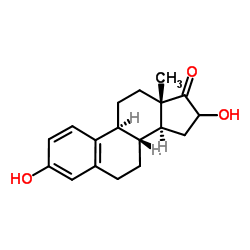

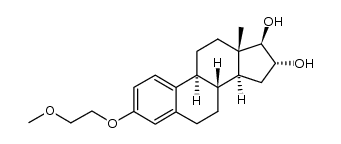
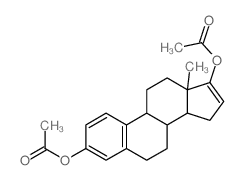
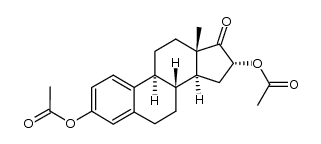
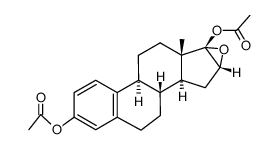
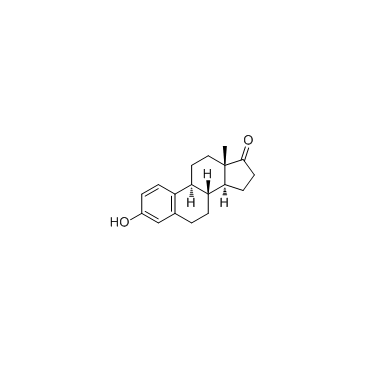



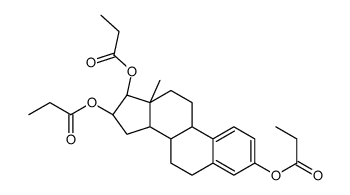


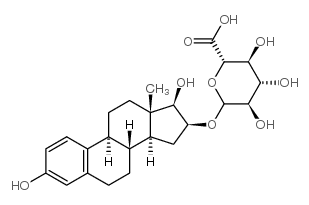
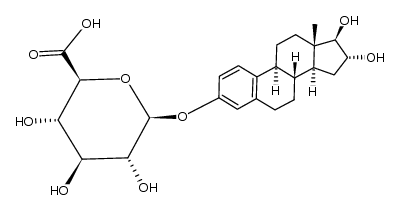
![1,3,5[10]-ESTRATRIENE-3,16ALPHA,17BETA-TRIHYDROXY 17-GLUCURONIDE structure](https://image.chemsrc.com/caspic/362/7219-89-8.png)
